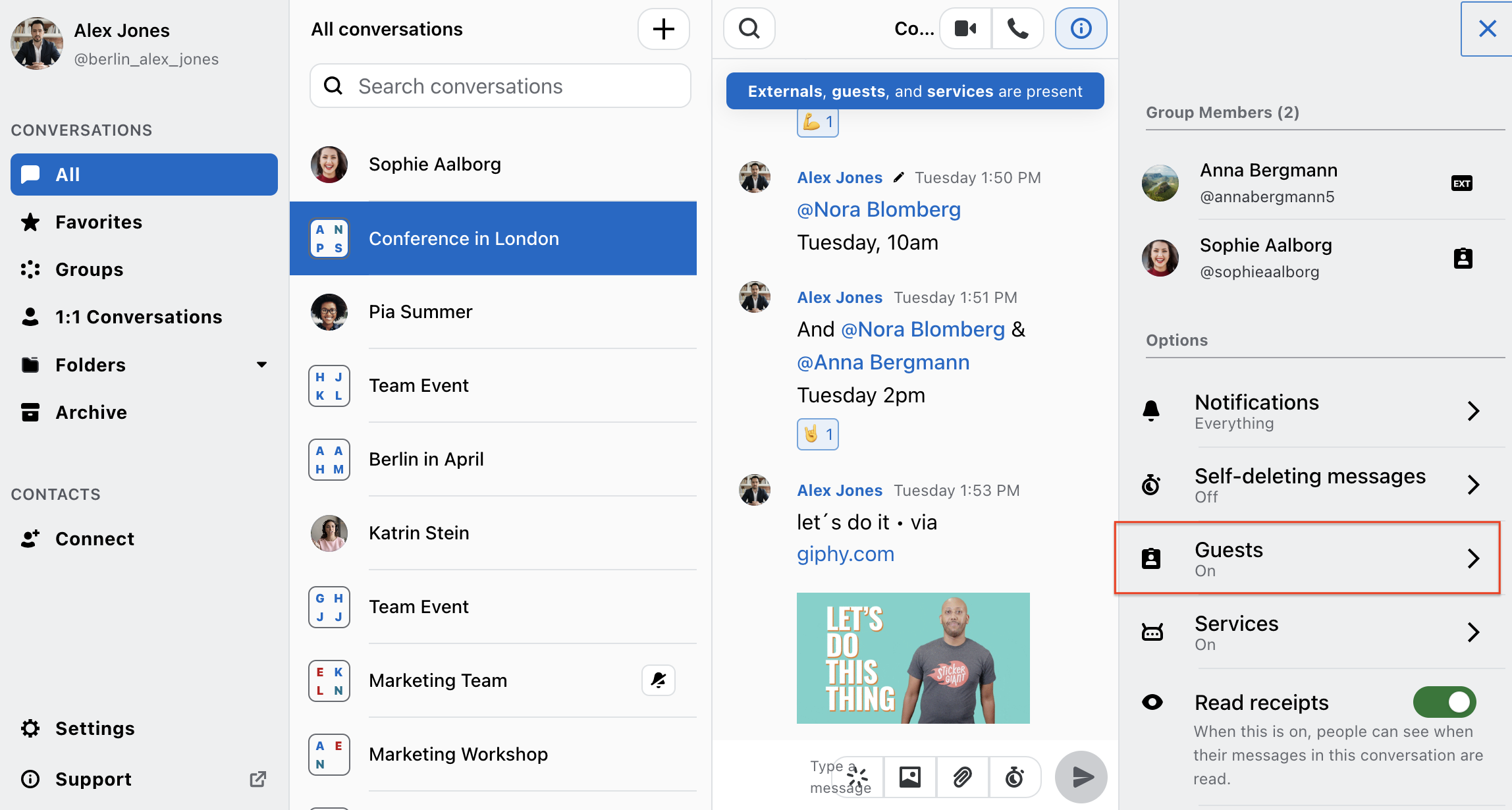In secure communication, there’s a big difference between inviting someone in and leaving the door open.
When it comes to collaboration across teams, vendors, or organizations, sometimes you need to bring in someone external temporarily. Maybe it's a legal consultant, a regulator, or a journalist. The key is doing it without compromising the integrity of the room.
Wire’s guest functionality exists for exactly these scenarios: enabling controlled, time-boxed participation with clarity and consent.
The Problem with "Just Adding Someone"
We’ve seen what happens when communication platforms prioritize convenience over clarity. Conversations meant to be private end up exposed, compromised, or worse, weaponized. Many platforms make it too easy to add participants without full transparency or restrict granular control over their access.
And when the identity of participants isn’t clear, or when guests can quietly observe, screenshot or forward messages, trust is lost. That is not a technical bug, it’s a design failure.
In critical environments (government, critical infrastructure, finance) you can’t afford that ambiguity.
Wire’s Transparent and Controlled Guest Access
Who is a Guest?
A guest is someone with a personal Wire account or a member of a different team.
On Wire, guests are always marked as guests. You know when they join, and everyone in the conversation does too. They're limited in what they can see, what they can share, and how long they stick around. Our architecture is secure and self-aware. This is not just a UI detail, it’s an operational safeguard.

Here’s how it works:
- Invite by Link: Only admins can create a guest room. The link can be revoked at any time
- Time-Limited Presence: Temporary guests are automatically removed after 24 hours
- No Deep Integration: Guests can’t access your team directory, see your history, or invite others
- File-Sharing Restricted: Unless they’re a verified team member, they can’t share files
- Visible Security Banners: Everyone sees the same security status, even across federated backends
It’s the difference between someone being in the meeting versus someone lurking in the building.
How to add a Guest in a group conversation?
As a group admin, you can add a guest to an existing group conversation at any time.
In just 6 easy steps you can securely add an external participant to your conversation. Once added, they’ll receive a password-protected link to join. A “Guests are present” banner will then appear, ensuring everyone in the conversation is aware of the new participant.
See how it’s done in this quick walkthrough.
Why This Matters Now
Guest functionality might sound like a convenience feature. But in 2025, it’s a strategic necessity and Wire was built for this reality.
Whether you’re a government agency navigating regulated environments, or a company managing sensitive IP across partners, being able to collaborate without ceding control is sacrosanct. And as recent headlines show, even the most secure platforms can face trust breakdowns when access isn’t managed transparently.
Our secure collaboration tool includes end-to-end encrypted messaging, calling, conferencing, and file sharing. Powered by Messaging Layer Security (MLS), Wire ensures secure communication at scale (up to 2000 participants).
Our system supports federation, meaning different organizations or departments can interconnect, without losing administrative oversight. Each team retains control over its users, guests, policies and data.
That’s how we protect collaboration across agencies, states or even countries.
Layered Trust with ID Shield
Guest transparency doesn’t stop at a label.
With ID Shield, Wire verifies the identity and the device of the participant to ensure only known and authenticated users get access. That applies to internal users and federated guests.
It’s about layered trust: you don’t just verify the person, you verify the device, their role, and their intent.
A Wake-Up Call for Secure Communication
Too often, organizations learn the hard way that “secure enough” isn’t secure at all. A platform might have encryption, but without controls, visibility, and safeguards, it’s just a locked door with no peephole.
Secure-by-default platforms like Wire are designed for the reality of today’s threat landscape: leaks aren’t always external, they can start from within.
Transparency isn't a luxury. It’s an operational necessity.
Takeaway: You Don’t Need to Say "No" to Collaboration
You just need to say "Yes, but securely.
Wire lets you invite guests in without losing control of the room.
Want to see more?
